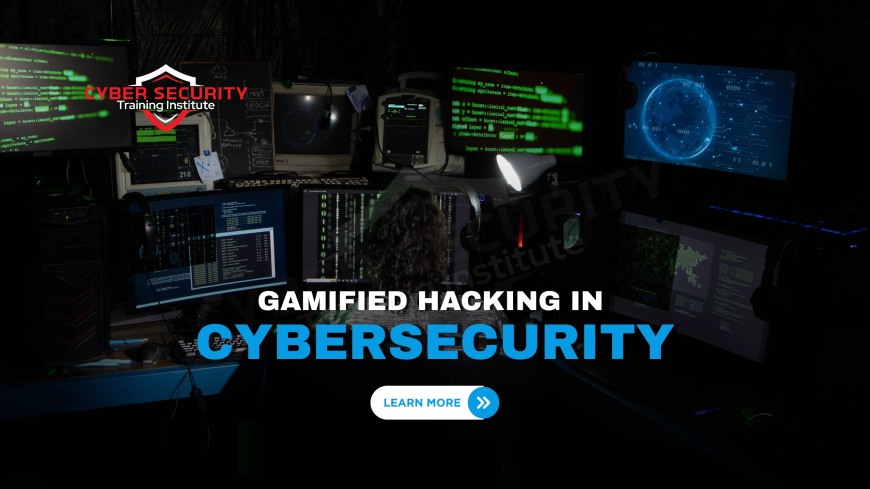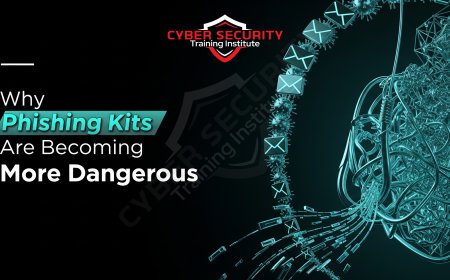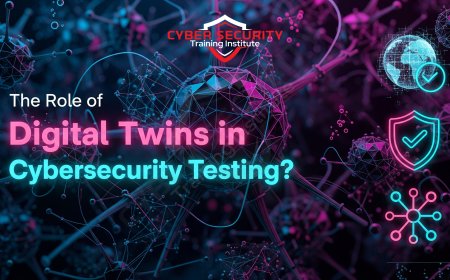Gamified Hacking | The Rise of Cybersecurity Learning Through Games
In a world where cyber threats evolve faster than most can keep up, learning cybersecurity is no longer just for tech wizards in dark rooms. It’s for everyone—students, professionals, and even curious beginners. But let’s be honest: studying cybersecurity can feel like wading through a swamp of technical jargon and dense textbooks. Enter gamified hacking, a revolutionary approach that turns learning cybersecurity into an exciting, interactive adventure. By blending gaming elements like points, challenges, and leaderboards with real-world hacking scenarios, gamified platforms are making cybersecurity education accessible, engaging, and dare we say, fun. This blog post dives into the rise of gamified hacking, exploring how it’s transforming the way we learn to protect the digital world.

Table of Contents
- What Is Gamified Hacking?
- Why Gamification Works in Cybersecurity
- Popular Gamified Hacking Platforms
- Benefits of Gamified Cybersecurity Learning
- Challenges and Limitations
- The Future of Gamified Hacking
- Conclusion
- Frequently Asked Questions
What Is Gamified Hacking?
Gamified hacking refers to the use of game-like elements to teach cybersecurity skills. Instead of reading dry manuals or watching long lectures, learners engage with interactive challenges that mimic real-world hacking scenarios. These platforms often present tasks like cracking passwords, exploiting vulnerabilities, or defending systems, all wrapped in a game-like environment with rewards, levels, and competition.
Think of it like playing a video game where you’re the hero, but instead of slaying dragons, you’re stopping cybercriminals. Points are earned by solving puzzles, badges are awarded for mastering skills, and leaderboards rank you against others. This approach not only makes learning fun but also helps users practice skills in a safe, controlled environment.
Why Gamification Works in Cybersecurity
Gamification taps into human psychology to make learning stick. Here’s why it’s so effective:
- Engagement: Games are inherently fun, keeping learners motivated to tackle complex topics.
- Immediate Feedback: Solving a challenge gives instant results, helping learners understand what works and what doesn’t.
- Progression: Levels and badges create a sense of achievement, encouraging continuous learning.
- Competition: Leaderboards foster healthy rivalry, pushing users to improve.
- Safe Practice: Simulated environments let users experiment without real-world consequences.
By turning abstract concepts into hands-on challenges, gamified hacking bridges the gap between theory and practice, making it easier for beginners to grasp and experts to refine their skills.
Popular Gamified Hacking Platforms
Several platforms have emerged as leaders in gamified cybersecurity education. Below is a table highlighting some of the most popular ones:
| Platform | Focus | Skill Level | Key Features |
|---|---|---|---|
| Hack The Box | Penetration Testing | Beginner to Advanced | Virtual machines, challenges, leaderboards |
| TryHackMe | Cybersecurity Basics | Beginner to Intermediate | Guided rooms, learning paths, badges |
| OverTheWire | Linux and Wargames | Beginner to Advanced | Command-line challenges, SSH access |
| PicoCTF | Capture The Flag | Beginner | CTF challenges, school-friendly |
Each platform offers unique experiences, from virtual machines you can “hack” to guided tutorials that break down complex concepts. For example, TryHackMe’s beginner-friendly “rooms” teach you step-by-step, while Hack The Box throws you into the deep end with realistic scenarios.
Benefits of Gamified Cybersecurity Learning
Gamified hacking platforms offer a range of advantages that traditional learning methods struggle to match:
- Accessibility: Many platforms are free or low-cost, making cybersecurity education available to anyone with an internet connection.
- Hands-On Practice: Real-world scenarios teach practical skills, like finding vulnerabilities or securing networks.
- Community Engagement: Forums and leaderboards create a sense of community, where learners can share tips and collaborate.
- Flexible Learning: Users can learn at their own pace, choosing challenges that match their skill level.
- Career Preparation: Many platforms align with certifications like CompTIA Security+ or CEH, helping users prepare for professional roles.
These benefits make gamified hacking an appealing option for students, hobbyists, and professionals looking to upskill.
Challenges and Limitations
While gamified hacking is transformative, it’s not without its hurdles:
- Learning Curve: Beginners may feel overwhelmed by technical challenges without proper guidance.
- Over-Reliance on Games: Some learners might focus on points and badges rather than understanding core concepts.
- Limited Scope: Games often simplify real-world scenarios, which may not fully prepare users for complex cyber threats.
- Cost Barriers: Advanced features on some platforms require paid subscriptions, which can be a barrier for some.
Despite these challenges, the benefits often outweigh the drawbacks, especially as platforms continue to evolve and address these issues.
The Future of Gamified Hacking
The future of gamified hacking is bright, with several trends shaping its growth:
- AI Integration: Artificial intelligence could create dynamic challenges that adapt to a user’s skill level in real-time.
- Virtual Reality: VR could immerse learners in 3D cyber environments, making scenarios feel even more real.
- Wider Accessibility: As platforms expand, we’ll likely see more free resources and multilingual support to reach global audiences.
- Corporate Adoption: Companies are starting to use gamified platforms for employee training, ensuring their teams are cyber-ready.
As cyber threats grow, gamified hacking will likely become a cornerstone of cybersecurity education, blending fun with critical skills.
Conclusion
Gamified hacking is revolutionizing how we learn cybersecurity. By turning complex concepts into engaging, game-like challenges, platforms like Hack The Box, TryHackMe, and others are making cybersecurity accessible to all. The benefits—hands-on practice, community engagement, and flexible learning—far outweigh the challenges, such as steep learning curves or simplified scenarios. As technology advances, gamified hacking will only get better, with AI, VR, and broader accessibility paving the way. Whether you’re a beginner curious about cybersecurity or a professional sharpening your skills, gamified hacking offers a fun, effective way to stay ahead of cyber threats. So, why not dive in, solve a challenge, and start your journey to becoming a cybersecurity hero?
Frequently Asked Questions
What is gamified hacking?
Gamified hacking is learning cybersecurity through game-like platforms that use challenges, points, and leaderboards to teach skills like hacking or securing systems.
Is gamified hacking legal?
Yes, gamified hacking platforms operate in safe, controlled environments designed for learning, so users can practice without breaking any laws.
Who can use gamified hacking platforms?
Anyone interested in cybersecurity, from beginners to advanced professionals, can use these platforms to learn or improve their skills.
Do I need coding skills to start?
No, many platforms offer beginner-friendly challenges that don’t require coding, though basic programming knowledge can help with advanced tasks.
Are gamified hacking platforms free?
Many platforms offer free access to basic challenges, but advanced features may require a paid subscription.
What skills can I learn through gamified hacking?
You can learn penetration testing, network security, cryptography, web application security, and more, depending on the platform.
Can gamified hacking help me get a job?
Yes, skills learned on these platforms align with industry certifications and can make you more competitive for cybersecurity roles.
How does gamified hacking differ from traditional learning?
Gamified hacking uses interactive challenges and rewards to make learning engaging, unlike traditional methods that rely on lectures or textbooks.
Is TryHackMe good for beginners?
Yes, TryHackMe offers guided tutorials and beginner-friendly “rooms” that make it easy to start learning cybersecurity.
What is a Capture The Flag (CTF) challenge?
A CTF is a cybersecurity competition where participants solve puzzles or hack systems to find hidden “flags” (codes) for points.
Can I use gamified hacking platforms on my phone?
Some platforms are web-based and work on mobile browsers, but complex challenges may require a computer for tools and interfaces.
Do I need a powerful computer to use these platforms?
Not usually—most platforms are cloud-based, so a standard computer with internet access is sufficient.
Are there age restrictions for gamified hacking?
Most platforms are open to all ages, but some require parental consent for users under 13 due to privacy laws.
Can gamified hacking teach me ethical hacking?
Yes, many platforms focus on ethical hacking, teaching you how to find and fix vulnerabilities responsibly.
How much time does it take to learn cybersecurity through games?
It depends on your pace, but beginners can learn basics in weeks, while mastering skills may take months of practice.
Are there risks to practicing hacking on these platforms?
No, these platforms use isolated environments, so there’s no risk of causing real-world harm.
Can I collaborate with others on these platforms?
Yes, many platforms have forums or team challenges where you can work with or learn from others.
Do employers recognize skills from gamified platforms?
Many employers value practical skills from platforms like Hack The Box, especially if paired with certifications.
Can gamified hacking prepare me for certifications?
Yes, platforms often align with certifications like CompTIA Security+, OSCP, or CEH, helping you practice relevant skills.
What’s the best platform to start with?
TryHackMe and PicoCTF are great for beginners due to their guided tutorials and beginner-friendly challenges.
What's Your Reaction?
 Like
0
Like
0
 Dislike
0
Dislike
0
 Love
0
Love
0
 Funny
0
Funny
0
 Angry
0
Angry
0
 Sad
0
Sad
0
 Wow
0
Wow
0
















